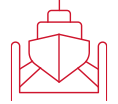Title Page
-
Site conducted
-
Conducted on
-
Prepared by
-
Prepared by
-
Location
-
Was an additional party involved?
-
List all other parties involved
-
List all other parties involved
-
List all other parties involved
-
List all other parties involved
-
List all other parties involved
Instructions
-
1) Compliance checks according to this inspection are to be completed on a instance-by-instance basis. For each instance of an element which is inspected, click the + icon in the top right corner of the inspection section to create a new set of fields. This should be done for each inspected instance.
2) Where a process must be immediately corrected label it as unsafe. Where there is no immediate danger, apply the OFI Label.
3) Any observed non-compliances should include both an action item and a description of the issue using the integrated functions.
4) Where instances of non-conformance are observed which may pose an immediate threat to the well-being of workers or bystanders, pause the inspection and immediately stop work. Make a note of this in the inspection once the area has been made safe.
5) While making records for this inspection, ensure that you are in a safe position to do so.
Inspection Body
Daily Inspection
-
Ladders (Inspect ladders and ensure there are no broken runs cracks or other visible damage)
-
Scaffolding (Daily inspection has been completed and the inspection tag has been filled out and signed)
-
Fork-lifts (The daily pre-trip inspection tag has been filled out and signed off)
-
Man-lifts (The daily pre-trip inspection tag has been filled out and signed off)
-
Scissor-lifts (The daily pre-trip inspection tag has been filled out and signed off)
-
Bob Cats (The daily pre-trip inspection tag has been filled out and signed off)
-
Crew Trucks (The daily inspection log has been completed)
-
Company Vehicles (The daily inspection log has been completed)
Environmental
-
Hazardous Materials(Properly labeled, protected from weather,<br>with sec containment /spill trays)
-
Waste Management(Clear proper bin signage for collection and disposal of waste and recyclables)
-
Spill Equipment (Containment Boom is ready for deployment)
-
Spill Equipment (Spill kit inventory is complete and contains all required supplies)
-
Response Vessel (Ready for deployment incase of Safety or Environmental emergency)
-
Pollution Control(controls in place to prevent contaminant release to air, land or water)
General Conditions
-
Housekeeping (Work area clear of clutter, tripping hazards etc.)
-
Fire Extinguishers (Pins in place & inspection date current)
-
Access to Critical Areas(Not blocked by vehicles, equip. etc.).
-
Material Storage(Materials are stacked and not leaning in a manner in which they could fall)
-
Life Line and Life Rings (In good condition &ready to deploy)
Personal Protective Equipment
-
Standard Work Gear (Hard hats, gloves and Steel toes are being worn by all workers).
-
Eye Protection (All workers are wearing safety glasses, goggles and/or a face shield appropriate for the task they are doing)
-
Hearing Protection (All workers in noise hazard areas are wearing hearing protection)
-
Fall Protection(Workers above10ft within 6.5ftof the leading edge are wearing fall protection)
-
PFD’s (All workers are wearing a lifejacket, done up while working near or overwater)
-
Respirators(Workers exposed to airborne contaminants are wearing respiratory protection)
Tools Machinery and Equipment
-
Hoisting equipment (All lifting mechanisms have been inspected and stamped/tagged with the safe working load limit WLL required )
-
Assured Grounding (All electrical cords have the current colored tape for the current quarter)
-
Electrical tools(All electrical tools have the third prong to ensure the equipment is properly grounded )
-
Welding Accessories(Ensure Oxygen& Acetylene tanks are chained/tied off and secured)
-
HS-WP-16Guarding (All grinders and cutting tools have the guards in place)














